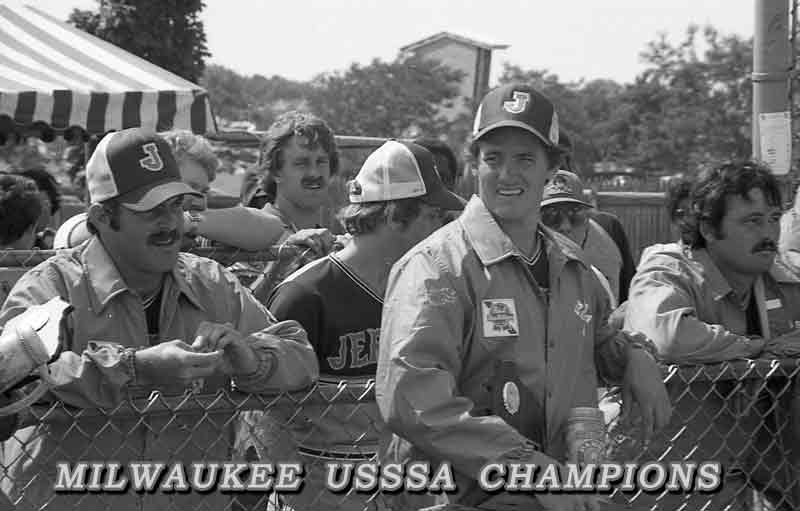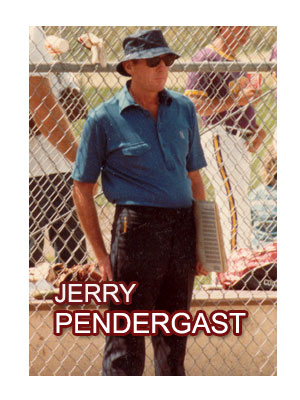 They keep coming, one incredible hulk after another. Some teams may have five or six Luzinski-sized sluggers who can crank it out of any park. But this one has 10—every player in the lineup a home-run threat. No wonder it has been called the most awesome scoring machine ever assembled in the sport. After 99 games this season it is 84-15 and is averaging nearly four runs—an inning.
They keep coming, one incredible hulk after another. Some teams may have five or six Luzinski-sized sluggers who can crank it out of any park. But this one has 10—every player in the lineup a home-run threat. No wonder it has been called the most awesome scoring machine ever assembled in the sport. After 99 games this season it is 84-15 and is averaging nearly four runs—an inning.
Closer inspection reveals that the team is composed of a bunch of caterers. You know, the fellows who make canapés and petits fours for weddings and bar mitzvahs. At least that's what their jerseys say—JERRY'S CATERERS. In truth, only a few of them work for sponsor Jerry Pendergast of Miami; the rest are electrical workers, laborers and heavy-equipment operators who play for his No. 1-ranked slo-pitch softball team.
More precisely, they are softball players who moonlight as caterers, laborers, electrical workers and heavy-equipment operators. Because everyone in softball is a free agent, Pendergast will most likely lose several of his stars when this year ends. Then he will have to rebuild, just as he did after last season.
At this time last year all but four players on his 14-man roster were working and playing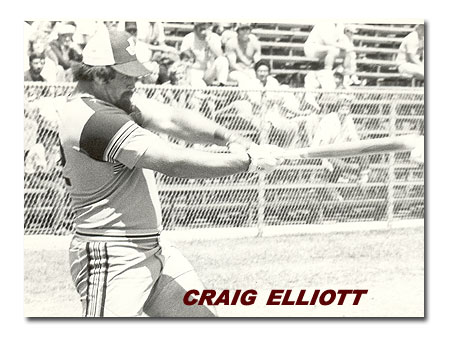
places like Oklahoma City, Augusta, Ga. and Detroit. They are in Miami now because, to get right down to it, Pendergast made them deals they couldn't refuse: a job either with his company or another in the community, plus an expense-paid vacation in one case, a down payment on a house in another, air fare for wives to all games in others. And just to make sure that this generosity isn't for naught, those who work for him knock off at three to lift weights and practice hitting. Those players who work elsewhere are compensated by Pendergast for the days they're traveling with the team.
But the competition is breathing down Jerry's neck. One sponsor usually throws in a car and an interest-free loan to get the players he wants; another offers jobs in his company at twice the salary of a non-softball employee or, better yet, a percentage of the profits. If a player has an especially good season, he may be enticed to leave by a home-run bonus or a job for his wife.
Hold on a second. This is slo-pitch Softball. You remember, the game played at Fourth of July picnics and after work for an hour or so on the way to the local watering hole. Sure, a few overfed, over-the-hill and overzealous Americans suit up for their companies, churches and taverns, but most of them play in search of flashbacks to a time when the ball was harder and 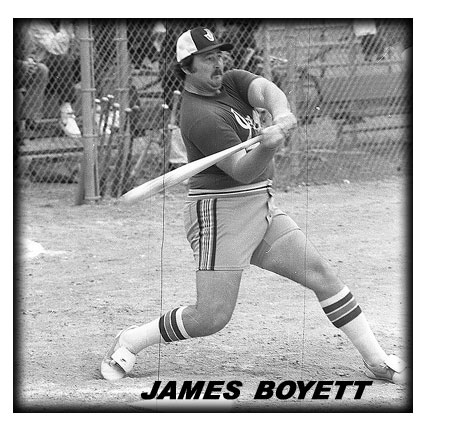 smaller and so were they.
smaller and so were they.
This brand of ball is different. It is played by an elite group of 20 or so company teams that make up the National Slo-Pitch Conference, the United States Slo-Pitch Softball Association and the major division of the Amateur Softball Association. "I've had a team going on 20 years now, and I can't remember when it hasn't cost me $100,000," says Ken Sanders, owner, sponsor and manager of Ken Sanders Subaru in Augusta. "This year I figure I'll spend closer to $150,000." And only two of Sanders' players work for him. For sponsors that have entire teams on the payrolls earning inflated salaries, the cost can run as high as $400,000.
Fortunately for the sponsors and players alike, the overseers of Softball take a three-monkeys attitude toward violations of their amateur code, which states that no player shall be paid to play ball. "As long as I can make it all look like expenses," says one sponsor, "I can give the players whatever it takes to get them." One NSPC official even concedes, "A top player can cost up to $30,000." Like the legendary Al (The Wanderer) White, one of the game's premier hitters, whose travels have taken him to seven cities since 1969. "Wave that dollar in front of ol' Al and he's gone," says Jerry's Outfielder James Washington.
These teams are not to be confused with those in the struggling American Professional Slo-Pitch League and its antique collection of ex-major-leaguers. In fact, the players become slightly miffed when asked whether they play in the APSPL. "These teams definitely have better players," says Mike Nye, who for three years was one of the APSPL's highest-paid players before returning to the so-called amateur ranks this season. "The best pro teams couldn't stay on the field with a club like Jerry's," adds Stu Weinstein, who writes a weekly Softball column for The Miami News. "As a matter of fact, there are probably 15 amateur teams now that could beat the best of the pros."
Ordinarily, a lot fewer beat Jerry's. However, the team was upset at the NSPC championship in Birmingham, Ala. last week, largely because of injuries to two key players. Jerry's will still be the club to beat in this week's ASA championships and the USSSA tournament later this month.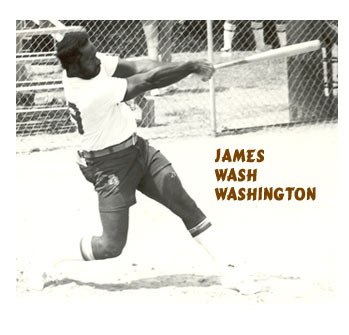
The only problem with the amateurs is that some teams are so strong they make a mockery not only of an opponent but also of the sport itself. For example, Jerry's opened the season against Rusty's Plumbing of Sarasota, Fla., a respectable Class A (the next-best amateur division) team. The final score: Jerry's 85, Rusty's 6. Despite what the score suggests, the minor-leaguers didn't embarrass themselves (Rusty's committed only one error), but there's not a whole lot you can do when the other side hammers a national-record 48 home runs over the 275-foot fences. In ensuing weeks Jerry's pounded out scores like 50-25, 51-19 and 55-42—mostly in Softball Fenways. At present the team, which averages 6'2" and 235 pounds, is batting .602 and leading the country with 12.1 homers a game.
Nowadays, most important major-division tournaments are held in parks whose fences are at least 290 feet out. Consequently, the results resemble football more than basketball scores, and each team gets only six or seven bumps, which is slo-pitch patois for home runs. Fast-pitch aficionados, who get their kicks watching a 1-0 game with 30 strikeouts, would argue that these teams are equally far removed from the true sport of Softball. But the fastball version of the game is all but extinct. Jerry's Caterers give the fans what they want—action and drama.
 Against Bill's Barbecue of Wilson, N.C. earlier this year, Jerry's won 35-34 after trailing 35-24 in the bottom half of the seventh and last inning. Fence-busting comebacks of this nature are commonplace in slo-pitch, especially for Jerry's, which won 11 of its 16 regular-season tournaments and never finished lower than third.
Against Bill's Barbecue of Wilson, N.C. earlier this year, Jerry's won 35-34 after trailing 35-24 in the bottom half of the seventh and last inning. Fence-busting comebacks of this nature are commonplace in slo-pitch, especially for Jerry's, which won 11 of its 16 regular-season tournaments and never finished lower than third.
"It doesn't much matter if we play in Yellowstone," says Pitcher Craig Elliott, who is 6'4", 280 pounds. "We're still going to hit 'em."
Says Second Baseman James Boyett, who is 6'1", 235 pounds, "We're like E.F. Hutton—when we hit, people listen."
Says Elliott, "When we're at bat, home plate is like a popcorn machine."
Elliott and Boyett were reared in Alabama hamlets, and both bat as well as they gab. In 1978, Boyett, 29, set a then national single-season home-run record with 303 in 162 games. This season he's hitting .633 with 132 bumps. Elliott, 28, who recently stopped weight training when his chest reached 52 inches and his thighs 31 inches, wields the aluminum better than anyone in the game today. Last year his .718 average was tops in the country, and he finished second in the home-run race with 219. He's currently leading Jerry's in batting (.701) and bumps (168). His approach to the art of hitting is simple: "I tell the ump, 'I ain't up here to walk. If it's inside the batter's box, call it a strike.' "
Elliott and Boyett are only two of Jerry's stars. The team includes eight other ASA, NSPC and USSSA All-Americas, five of whom are among the nation's Top 20 in both hitting and homers. Even on a good-sized field this kind of talent clearly dictates a long-ball strategy. With that in mind, here is a short but complete guide to managing a big-time slo-pitch team, some of which may also be of use to skippers of more mortal clubs:
•Forget the old maxim "strength up the middle." Put your' most gifted athletes in left and left center. They'll see five times as many balls as the shortstop.
•Forget about the traditional batting order—quick, fast leadoff man, power hitter at cleanup, etc. A manager's main concern is to get his top bumpers as many swings as possible. Boyett leads off for Jerry's, followed by Elliott.
•Play the outfield deep and don't worry if singles are sometimes stretched into doubles. It takes a lot of singles and doubles to score 20 runs.
•Don't bother instructing your players to run out fly balls. They all have egos the size of their biceps. When a ball is popped up with two away, expect to see the hitter with his glove—and the defense halfway to the dugout—before the ball is caught.
•Have your pitchers—and don't be bashful about switching—do anything to lessen the chances of opposing hitters' jerking the ball over the lights.
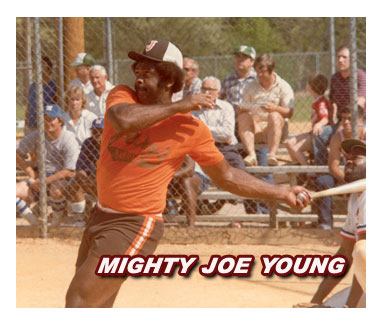 Elliott is the master of disruption. His antics range from fearsome Al Hrabosky stares to neighborly Southern how're-the-wife-and-kids chatter. In midsentence the ball is floating toward the unsuspecting hitter. At other times he'll stalk in the direction of one of the bases, turn, go back to the rubber and then, without breaking stride, stealthily flick the ball that he's been hiding behind his massive thigh. Afterward he backpedals furiously to protect life and limb. "If I throw a gut shot, you'll find me back by second base," he says.
Elliott is the master of disruption. His antics range from fearsome Al Hrabosky stares to neighborly Southern how're-the-wife-and-kids chatter. In midsentence the ball is floating toward the unsuspecting hitter. At other times he'll stalk in the direction of one of the bases, turn, go back to the rubber and then, without breaking stride, stealthily flick the ball that he's been hiding behind his massive thigh. Afterward he backpedals furiously to protect life and limb. "If I throw a gut shot, you'll find me back by second base," he says.
From 1977 to '79 Elliott played for Ken Sanders and Boyett was with Dave Carroll Sports of Sherrills Ford, N.C. Both become reticent when the conversation turns to why they jumped teams, which each has done several times. Boyett does acknowledge that a Bahamian cruise for him and his wife, compliments of Pendergast, may have influenced his decision to play for Jerry's. Elliott says he craved "Miami's sunshine and fresh air." To date that longing remains unsated. Elliott is part owner of a construction company in his hometown of Wadley, Ala., but when asked where he lives, he rattles off in a single breath, "13713 Southwest 90th Avenue, Miami, Florida, Apartment M205, about middle ways down the hall, second building on the right, got a phone and everything." He exhales, gives a big grizzly grin and adds, "I've seen it, even stay there once in a while."
One of the few things amateur soft-ball officials can get sticky about is the residency rule. A player need not work for the sponsor, but he is supposed to live in the area where the sponsor's company is located. But, says one player, "There are teams with guys living five states away who use false affidavits."
Besides seeing to the needs of his players, Pendergast is an accomplished businessman who, unlike most other sponsors, doesn't interfere. He doesn't manage his team, as Ken Sanders does, nor does he have a lighted ball field in his backyard, like another owner, but he often flies his twin-engine Piper to see the team play. Pendergast keeps his soft-ball expenses to himself. He says only that he gets by "for less than most." He prefers to emphasize what an effective advertising vehicle his club has been, which is understandable, considering the internal problems a team can cause among non-softball-playing employees. Although Pendergast claims they harbor no resentment, the players tell a different story. "Sure they're upset," says one. "A lot of these people have worked long and hard and figure they should be getting something, too."
Adds another player, "You sense it [the resentment] most when you have to get off to go play and someone has to do your job. But the other workers don't know what it's like to pack up and move a family 600 miles into a strange city or to live out of a suitcase for 20 weekends."
Any local macho batsman who thinks that he, too, would like to hit the road in the name of softball and cash had best not get his hopes up. 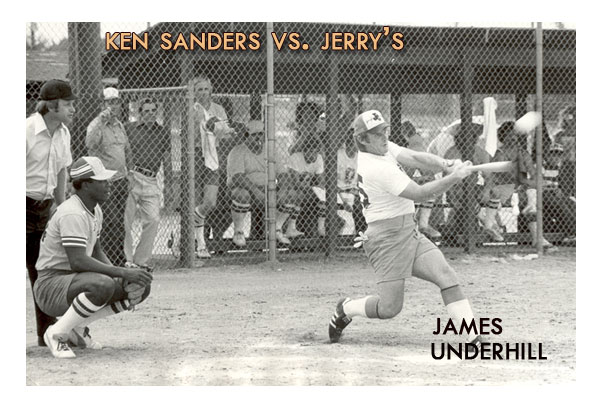 An unknown stands about as much chance of making a team like Jerry's as he does the Yankees. "I get calls all the time," says Manager Joe Brownholtz. "Guys are sure they can play for us. The first thing I ask about is size. If they're not around 6'4", 240,I usually say forget it. We know who the top players are around the country—guys that not only can belt the ball but also have a first-class arm and glove."
An unknown stands about as much chance of making a team like Jerry's as he does the Yankees. "I get calls all the time," says Manager Joe Brownholtz. "Guys are sure they can play for us. The first thing I ask about is size. If they're not around 6'4", 240,I usually say forget it. We know who the top players are around the country—guys that not only can belt the ball but also have a first-class arm and glove."
Jerry's went after 11 of those slo-pitch stars for this season and landed eight, thanks largely to Brownholtz, an associate professor of physical education at the University of Miami and a former player. "We flew down each of the players and their wives," he says, "showed them a good time, took them to Dolphin games and had them meet Jerry. Everybody comes away impressed with him."
Once a man signs on, he discovers that Pendergast can be a good boss to play for. Ernie Yaroshuk, general manager of Jerry's Caterers and an erstwhile player and manager of the team, says, "If a guy suddenly starts hitting the ball 290 feet instead of 300, a lot of sponsors will send him packing. Jerry would never turn his back on a player if he quit producing on the field, and I'm a prime example. I've been with him for 13 years."
Many players haven't been as fortunate. The lucky ones, like Elliott and Boyett, either aren't dependent on the sponsor for work or are content with their position in his company. Others are bitter and disillusioned. They feel they have been manipulated by a system under which they have built their working lives. The prospect of what they'll be doing when they no longer can regularly deposit a softball over a fence 300 feet away frightens them.
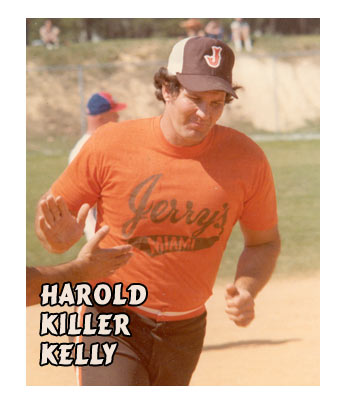 Jerry's Outfielder Harold Kelley is a typical case. In March of 1978 he gave up a junior high basketball coaching job in Eufaula, Ala. to take a better-paying position in Oklahoma City with the Nelson Painting Service, a perennial national slo-pitch power. Seven months later he was sweeping floors and running errands. So he headed for North Carolina, where he joined Dave Carroll as a territory salesman. Another bum steer. He didn't get much worthwhile job experience because Carroll rarely sent him out on the road during softball season. Today Kelley works in a concession stand and a hospital cafeteria and bats .622 for Jerry's Caterers.
Jerry's Outfielder Harold Kelley is a typical case. In March of 1978 he gave up a junior high basketball coaching job in Eufaula, Ala. to take a better-paying position in Oklahoma City with the Nelson Painting Service, a perennial national slo-pitch power. Seven months later he was sweeping floors and running errands. So he headed for North Carolina, where he joined Dave Carroll as a territory salesman. Another bum steer. He didn't get much worthwhile job experience because Carroll rarely sent him out on the road during softball season. Today Kelley works in a concession stand and a hospital cafeteria and bats .622 for Jerry's Caterers.
"I was nothing but a toy for Mr. Nelson," he feels. "He said I'd learn to be an estimator, but he got upset because I didn't play as well as he thought I should have. He used to say, 'I don't have to fire them, they fire themselves.'
"Mr. Carroll treated his players well—gave us $150 apiece for winning the regional's and picked up a lot of rents—but I was miserable sitting around all day without anything to do. Five teams contacted me about playing for them this season. Richard Howard [of Denver, N.C.] made me the best offer—salary plus 10% of one of his Western Steer restaurants for life—but Carroll and Howard lived only three or four miles apart, and I didn't want to leave one man to work for the other.
"Jerry's been good to us, but everyplace I've been so far it's been menial work, something to get by. I just want a chance to contribute, learn and advance. I don't want to wait until I'm 40 years old before I finally get a decent job. During your most productive years, your boss is only concerned with how well you play ball. He knows that when you're through he can pay somebody else half what you're making to do the same thing. They own you. It's like you're on the streets."
Unfortunately, the road to success always had a few bumps in it.
